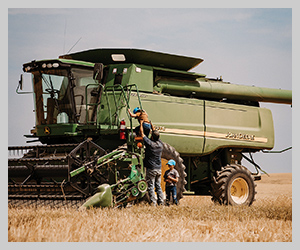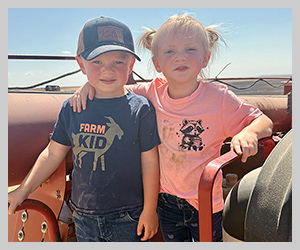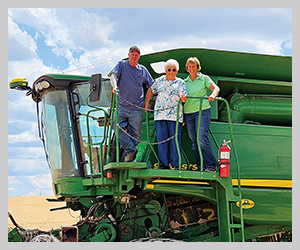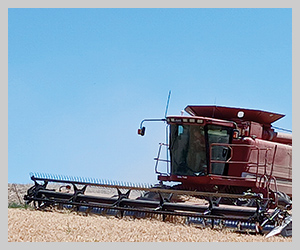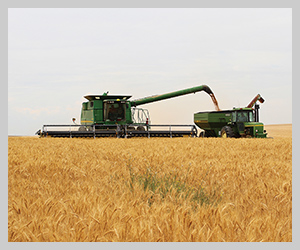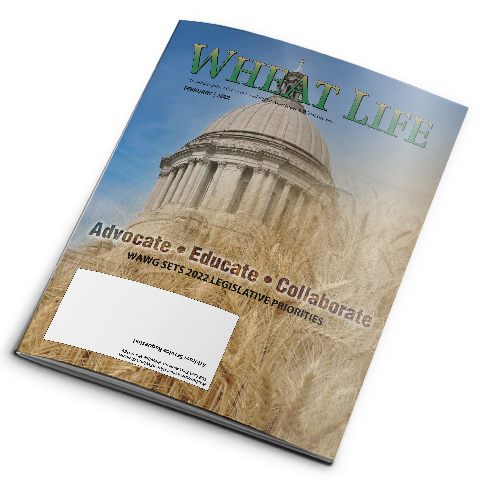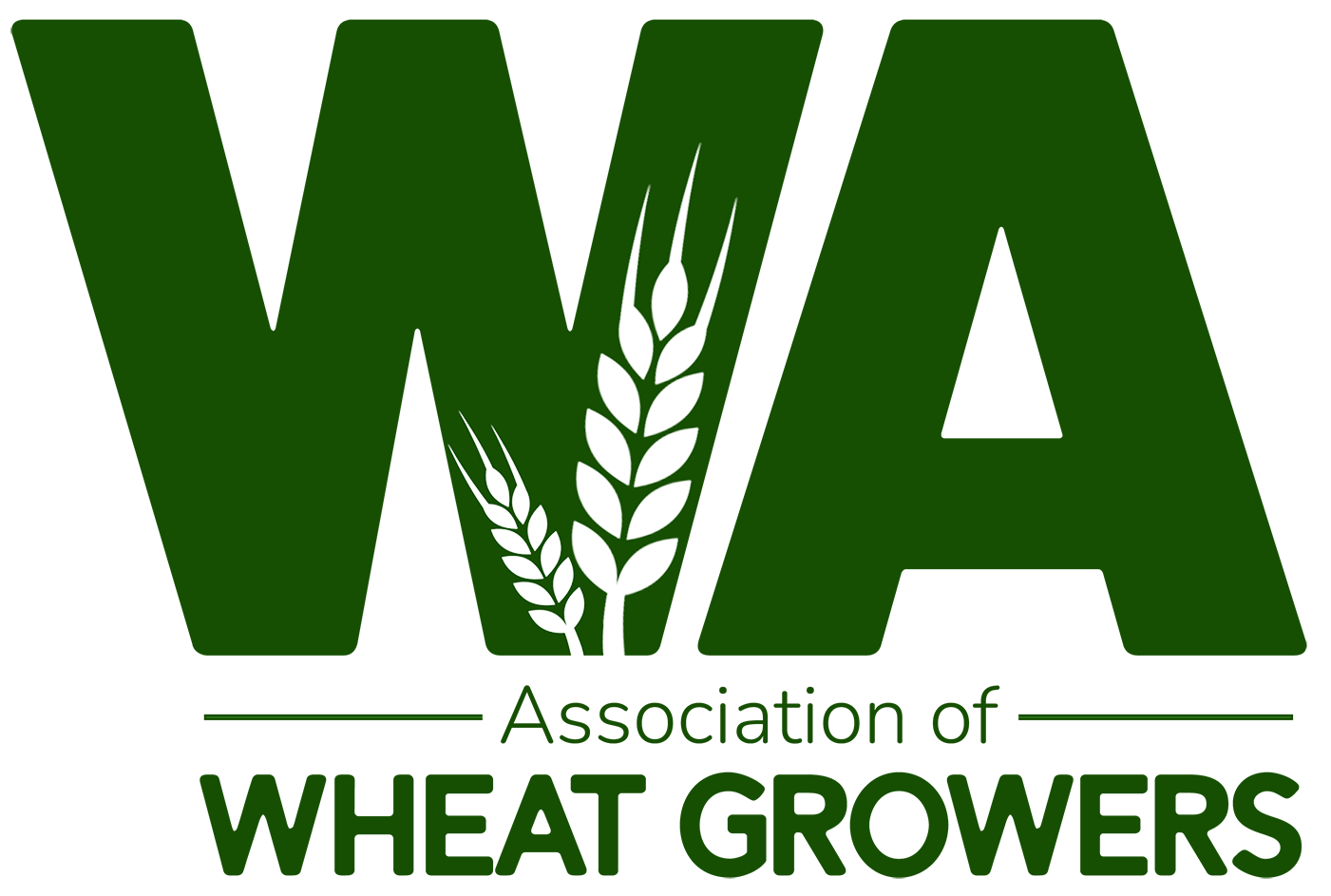Hope and hard work Exhibit at the Quincy Valley Historical Society and Museum celebrates region's ag history
2025April 2025
By Trista Crossley
Editor
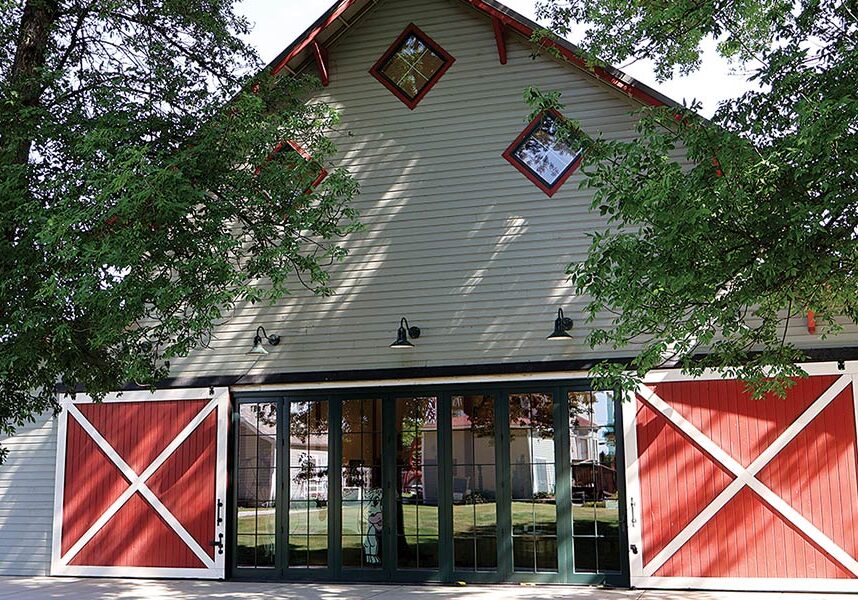
Before Grand Coulee Dam made irrigation viable in the Columbia Basin in the 1950s, farmers struggled to grow food in what was, essentially, a desert. An exhibit at the Quincy Valley Historical Society and Museum (QVHSM), “Hope and Hard Work: The Story of Our Farms and Food,” highlights the story of the region’s agriculture and the people who make it happen.
“Agriculture has been the main industry in Quincy,” said Harriet Weber, director of operations at the QVHSM. “We really wanted to share that story, and we wanted people to understand how important farmers are, be able to connect with them on a more personal level, and help them understand a little bit about how their food is grown and the whole struggle to be able to grow this kind of food here.”
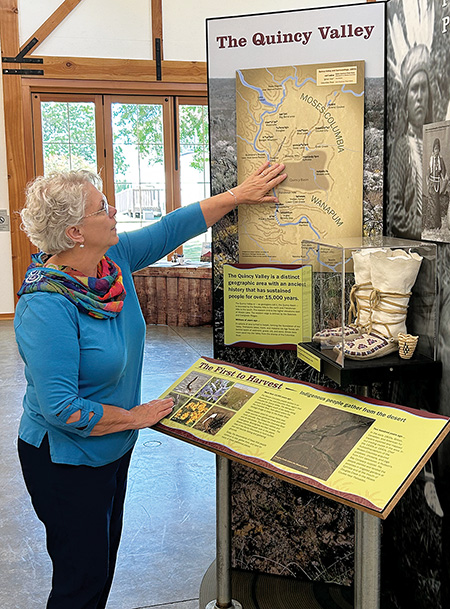
The exhibit is open to the public most Fridays and Saturdays, from 1-5 p.m., located in the QVHSM’s heritage barn.
The exhibit is showcased by a large mural depicting 100 years of agriculture, from the native tribes who travelled through the area to irrigation to GPS and automated farm machinery. There’s a 1940 John Deere tractor for kids to explore, an interpretive display on irrigation, and samples of many of the different crops that are grown in the region. Other displays talk about the different immigrant groups that came into the area and highlight various crops, such as cattle and sheep ranching and dryland wheat production. Activities for kids include an apple-picking game, a hand-cranked French fry sorter, and a milking cow.
One of the highlights of the exhibit is an augmented reality app with multiple stations. Visitors point a tablet at a silhouette to make a video appear. The videos cover women in agriculture, farm equipment, feedlots, and tell stories of people involved in agriculture.
Stepping back in time
The heritage barn, finished in 2018, is the latest addition to the QVHSM campus, which began to take shape in 2001 when the city was given the old, historic, Reiman-Simmons house with the stipulation that it be used as a community heritage site of some kind. A nonprofit was formed to restore the house. Then in 2007, the very first church built in Quincy was moved to the same site as the Reiman-Simmons house. Using state grants, the nonprofit also restored that building, which is popular for weddings, funerals, concerts, and speakers. Weber said one of the major features of the church is its embossed barrel vault ceiling, something that is very rarely found on the West Coast.
Following the church restoration, the nonprofit added a summer kitchen and a windmill to the Reiman-Simmons house, two features the house would have originally had.
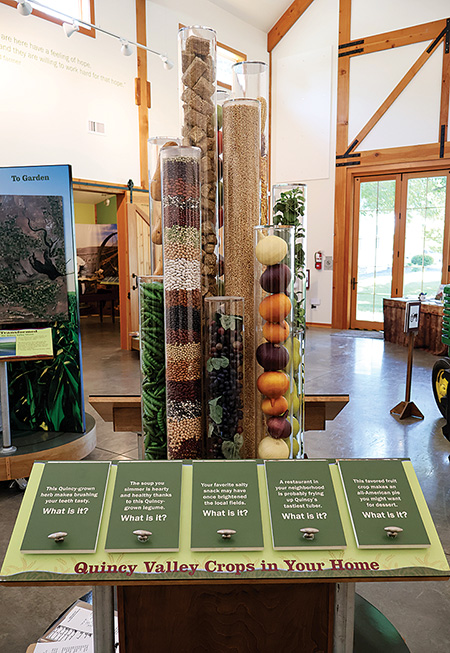
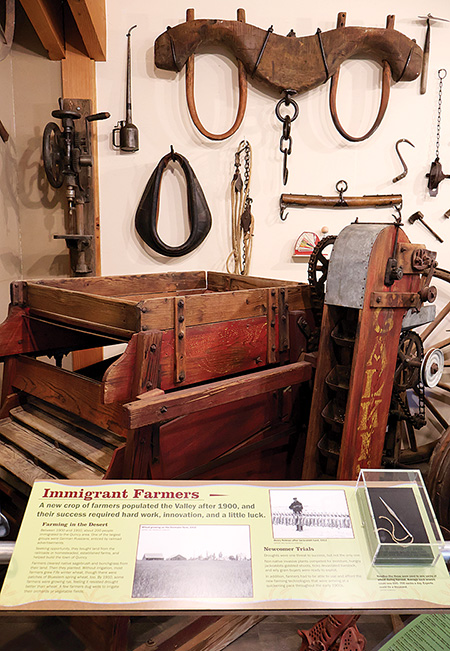
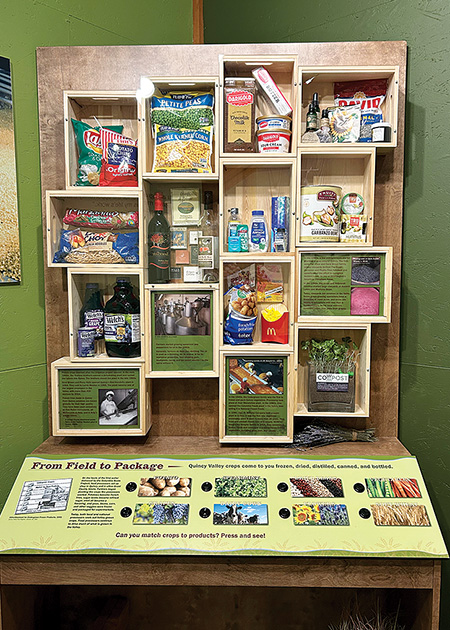
“So we had this whole campus kind of happening, but there really wasn’t any place for large gatherings, and we didn’t have any place to store collections,” Weber said. “We were storing photographs, documents, all those kinds of things, down in the basement of the Reiman-Simmons house, which is not a good place for an archive. The state of Washington approached us, because by then, we had already written two successful heritage capital funds grants. And they said, ‘You know, isn’t there something else you’d like to put on this property?’”
The heritage barn project began in 2016. One of the family foundations that helped fund the construction requested that telling the story of agriculture be part of the project. The barn, Weber said, seemed like the perfect place to do that.
“When you look at the pioneering families of this era here, you had their house, which was their home, their family. Then you have the church, which was their faith, and that was an important part of the life of the pioneer here. And then you have the barn, which represents their work and their livelihood. We wanted to tell the story of that,” she explained.
Because the barn is a multipurpose building — after getting married in the church, many couples hold a wedding reception in the barn — the exhibit is made to be mobile; it can be stored in a side room during events.
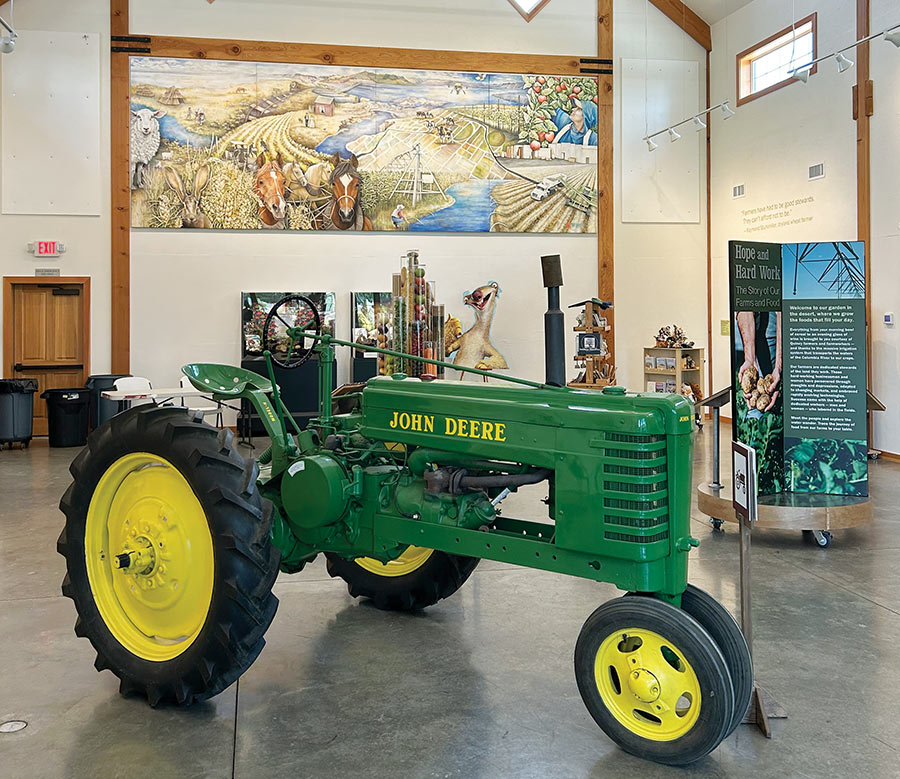
Although the barn is new, it was built in the same architectural style as many of the older pioneer barns in the area, including three diamond-shaped windows arranged in a triangular pattern in the center gable, a trademark of one of the area’s past barn builders.
“We have really made it our goal as a board for a long, long time to be more than just a museum. We are not just a place where you go and look at things and then you leave. In fact, we just changed our mission statement this last year to reflect that to say that we want to be a gathering place for our community for all generations,” Weber said. “We’re more than a museum. It’s like a cultural center as well.”
Stepping farther back in time
While native Americans traveled through the Quincy valley, the lack of water discouraged permanent settlements. Pioneers began settling in the area around 1902 when the railroad came through. Many of the early settlers were German-Russian immigrants who brought their knowledge of growing wheat with them.
“From those early days, when it was all dryland wheat or rye, that’s pretty much all you could grow,” Weber said. “Quincy was in danger of really dying out in the 1930s and 40s. The population really declined. We had our own mini dust bowl, if you will, from about 1912 to 1918, and a lot of people left, gave up their homesteads and moved down to the Yakima area or other places. The people that stayed were pretty hardy souls, and they believed that they were going to get irrigation water here at some point.”
Of course, that water came with the completion of Grand Coulee Dam, and so did another wave of immigration as the potential for more and different types of crops opened up. While agriculture is still very important in Quincy, another type of farm has recently been growing — server farms. While that has helped the local economy, it comes at the cost of traditional farms, especially when the server farms are built on existing farmland.
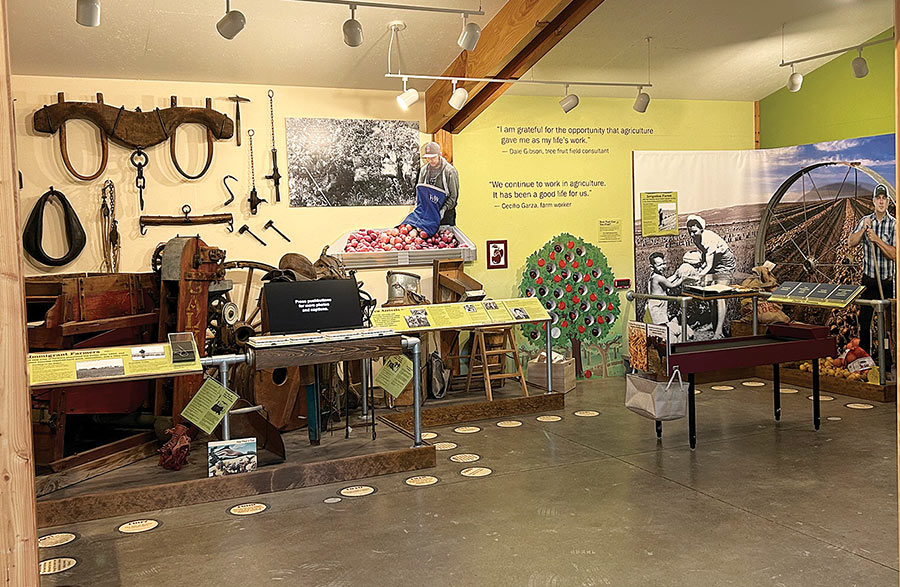
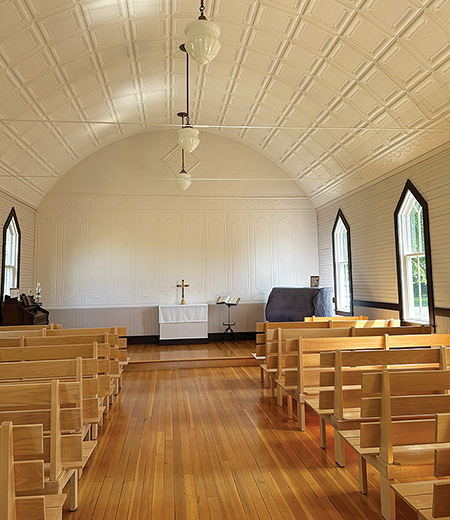
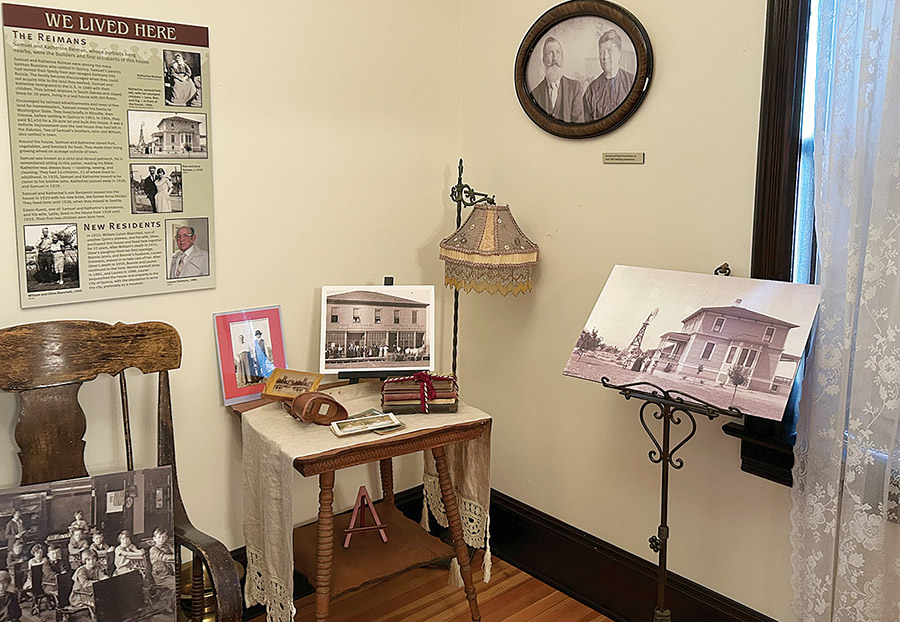
“I hope to always be able to tell the story of how this region became such a prime agricultural area,” Weber said. The campus hosts field trips for school children who get to be a pioneer for a day, experiencing traditional pioneer skills such as pressing apple juice, making beeswax candles, and turning milk into butter. “It’s really important for us to teach this to the children that come, what it was like to be a farm family in those early days. It’s really heartwarming for me, because I have grown people now that come back and get married in the pioneer church, and they remember coming to the third grade field day.”




